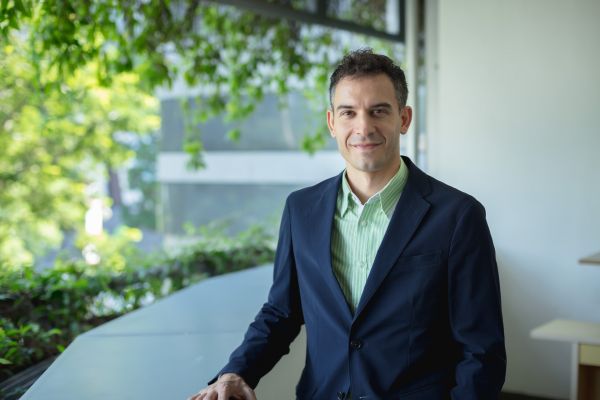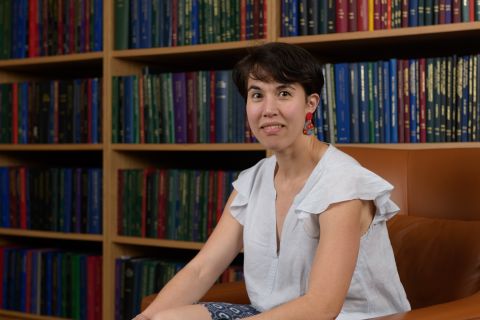
By Alistair Jones
SMU Office of Research & Tech Transfer – “A lot of valuable cultural heritage in Southeast Asia is rapidly deteriorating and it will be very difficult, if not impossible, to bring it back to life,” says David Ocón, an Assistant Professor (Practice) of Arts and Cultural Management at Singapore Management University (SMU).
Professor Ocón is the author of Digitalising endangered cultural heritage in Southeast Asian cities: Preserving or replacing?, which has been published in the International Journal of Heritage Studies.
The paper argues that documenting sites using today’s widely available and accessible digital technologies can help to spur more preventive preservation, particularly of endangered and non-protected cultural heritage.
And in cases where a physical site cannot be saved, a digital record – whether based on a meticulous survey before the site's destruction, or a computer-generated 'reconstruction' after the event – can preserve a cultural memory for future generations.
Professor Ocón's study focuses on at-risk and non-protected cultural heritage sites that struggle to survive in some of today’s large and densely populated Southeast Asian cities.
“Available urban space is a major issue in some [cities] in Asia where development needs to be considered in the equation,” he says.
“Beyond that, in several Southeast Asian countries, preservation of cultural heritage sites is still perceived as a luxury as it is expensive and traditionally has been spearheaded by foreign countries or international institutions.
“For instance, iconic places such as Borobudur or Angkor Wat wouldn’t be available to visitors today without the support of Japan and UNESCO. Beyond the cost, in some countries in the region, there are often other more pressing priorities than cultural heritage preservation, which is understandable,” Professor Ocón says.
Wider importance
In recent decades, the definition of cultural heritage has expanded significantly beyond monuments, buildings, and archaeological sites.
“The notion has evolved dramatically to become more inclusive, encompassing a variety of notions, from less-explored sites like gardens, landscapes, rural and industrial spaces, or even cemeteries, to the intangible heritage that can include customs, folklore, oral and performing traditions, and other manifestations,” Professor Ocón says.
“Beautifully restored shophouses or civic buildings are nice and they make our cities look more beautiful and 'visitable' from a touristic point of view. They even add new layers and meanings when bestowed with new roles in the cities – such as, museums, community centres, art spaces, or even malls.
“However, both citizens and tourists increasingly want to know more about the stories behind those spaces – who used to live or work there and why, how they lived and made their living, what was important to them.”
It is impossible to save everything, which raises the question of how we should frame priorities for deciding what heritage to preserve.
“Beyond how beautiful a site or place looks or used to look, when I work on a site I look at its importance beyond the looks, especially for society. For example, investigating the people who made that site possible and the associated stories,” Professor Ocón says.
“I think we need to be more creative regarding heritage sites and spaces and the uses we give them. Alternative solutions to integrate these spaces into the urban texture have proven successful in the past. We should explore them before a site is destroyed to allow room for development.”
A new heritage fever
Professor Ocón's paper highlights three preservation efforts in Singapore and Kuala Lumpur. Among them is Singapore's Bukit Brown Cemetery, a large and increasingly rare green space in the centre of the island that is home to an abundance of rich flora and fauna and contains around 100,000 graves and dozens of burial grounds, some dating back to 1922.
In 2011, the Singapore government announced that a new eight-lane road would be built over parts of the cemetery to cater to increased traffic. The decision met with fierce civil resistance and eventually the government agreed to discuss the cemetery's future with non-governmental groups.
Ultimately, the highway was completed in 2018, but in the interim a unique digital initiative emerged: the Bukit Brown Cemetery Documentation Project.
Sponsored by the government, the project was a collaboration between several universities, polytechnics, researchers, heritage societies and institutes, and adopted a holistic approach, treating the cemetery as an organic socio-cultural space.
It documented and virtually archived 3901 graves, including (where available) Chinese and English names, and close and wide-angle photographs of the graves. It also collected and virtually captured the social history, memories and rituals associated with the cemetery, as well as the exhumation process.
With the tangibility of those graves now gone, the online resource serves as a platform to disseminate findings, educate the public on the heritage value of the Bukit Brown Cemetery and, to some extent, keep it ‘alive’.
The fate of the cemetery activated a new heritage consciousness in Singapore’s citizenry, a kind of heritage fever, with a flourishing of grassroots support rarely seen in the city state.
“There are many reasons [why], but I would say that the availability of information, the diversity of sources and social media played an important role,” Professor Ocón says.
In a 2021 survey of Singapore residents conducted by Professor Ocón, 96 percent affirmed that the country’s tangible cultural heritage had to be preserved.
“If we extrapolate the results from this sampling to Singapore’s population, a sense of belonging, safeguarding and commemoration of memories, and identity-building feature are the three major reasons for residents in Singapore to preserve their cultural heritage,” Professor Ocón says.
Open dialogues
The case of Bukit Brown highlights the importance of collaboration in the preservation of cultural heritage in the region.
“It is crucial to have open dialogues about these issues. It will be beneficial for all the residents in a country. Civil societies have fantastic contributions and ideas on how to interact and experience cultural heritage,” Professor Ocón says.
“Heritage preservation today is about providing meaningful and functional spaces, not just nice-looking ones. Spaces that communicate stories and connect old and new residents with the place's roots, helping to understand better their relevance and the valuable contributions made by those who were here before us.
“We are lucky that in 2022 we have a wide range of tools, from traditional photography and filming to more sophisticated photogrammetry and 3D modelling. Prices of drones and cameras have dropped substantially in the past few years and they are now widely available. So, let’s use them.”
Back to Research@SMU August 2022 Issue
See More News
Want to see more of SMU Research?
Sign up for Research@SMU e-newslettter to know more about our research and research-related events!
If you would like to remove yourself from all our mailing list, please visit https://eservices.smu.edu.sg/internet/DNC/Default.aspx

